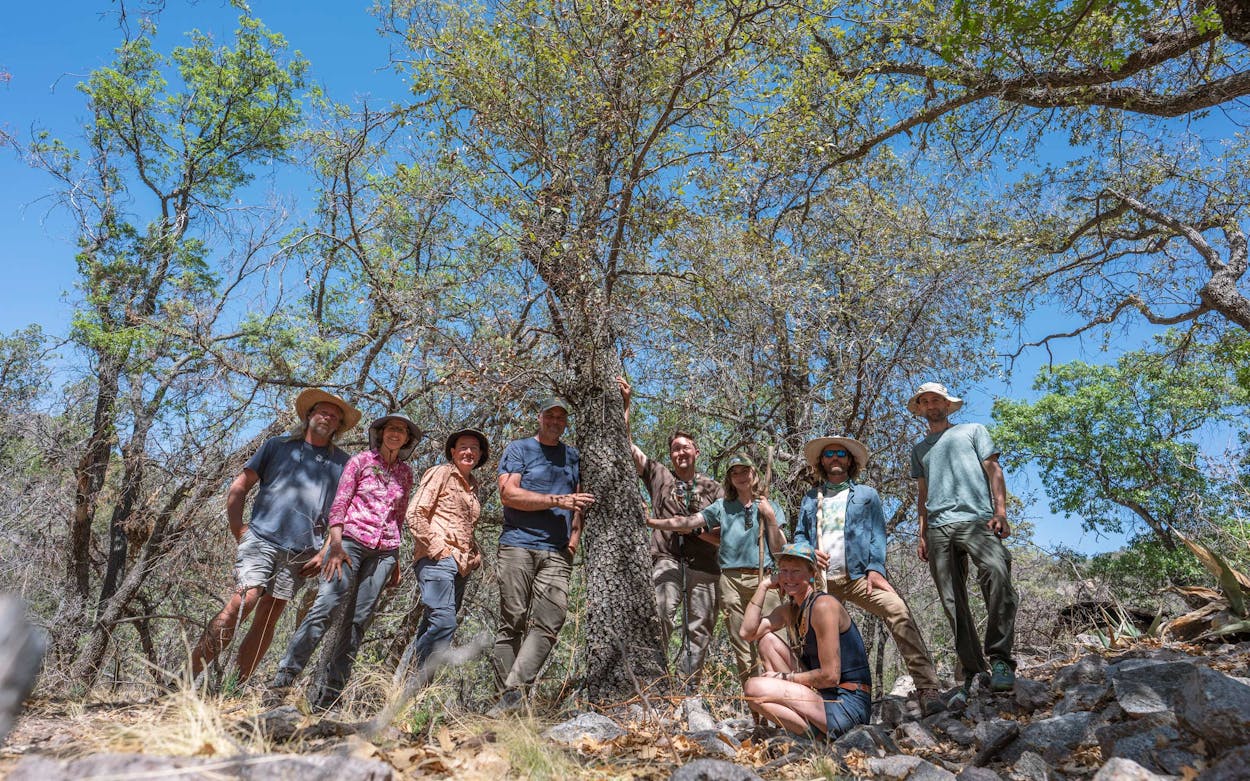WHO: Michael Eason, associate director of conservation and collections at the San Antonio Botanical Garden, and a nationwide team of tree experts.
WHAT: A missing oak species—the Quercus tardifolia—that was thought to be extinct, until nine botanical researchers scoured Big Bend in search of one last living tree.
WHY IT’S SO GREAT: When the last known specimen of the Quercus tardifolia, better known as the Chisos Mountains oak or lateleaf oak, died or otherwise vanished (no one is quite sure what happened) in 2011, scientists thought it was extinct. That changed last May, when a single living tree was discovered in Big Bend National Park, giving researchers a chance to revive the species. Michael Eason played a critical role in that discovery as part of a team of nine botanical researchers, funded by the Morton Arboretum and United States Botanic Garden, who carefully searched the park for evidence of Quercus tardifolia’s survival.
Despite the team’s expertise, rescuing a species last seen more than a decade earlier was not without its challenges. As Eason explains, individual oak species—and especially those in the Chisos Mountains region—are notoriously difficult to identify by sight. Of the nearly thirty known kinds of oak in West Texas alone, it can be tricky even for experts to distinguish between unique species, subspecies, and hybrids without analyzing each tree’s genetic material in a lab. In fact, Eason notes, on the team’s journey to identify Quercus tardifolia, they actually made several additional discoveries, including that of another as-yet-unidentified species of oak. After a mostly fruitless initial expedition in 2021, the researchers (including Adam Black, a plant hunter previously profiled in Texas Monthly) set out once again in May 2022 to survey Big Bend’s Boot Canyon. They used the same tactic employed in search-and-rescue operations, combing the wilderness in one long line. It would not be until the third day of this second attempt that Eason came across a tree—roughly 30 feet tall and 80 yards off the established hiking trail—unlike any of the thousands he’d encountered during his expeditions.


“It can be difficult to explain to people unfamiliar with oaks,” Eason said, but whether it was just the right light, or the way the tree’s remarkably stiff leaves fluttered in the breeze, he knew he was looking at something special. With Eason’s find, Quercus tardifolia was on the path to repopulation. The tree wasn’t initially in great shape, having survived both a fire and a fungal infection, but it has proved to be resilient.
Despite the discovery in Big Bend, Eason is careful to point out that for the time being, Quercus tardifolia may still be functionally “extinct,” at least until additional specimens have matured enough to pollinate and produce acorns. Until then, bringing the species back from the brink will require some human intervention. Last month, Eason hit the road to bring grafting materials from the Big Bend specimen back to the botanical garden, with the hope of cultivating new trees that can live there permanently. That cultivation effort is just getting started, but Eason is hopeful that by next year, the new trees grown from those grafting materials will be mature and healthy enough to plant among the garden’s expansive collection of local flora. Once they’re strong enough, they may be put on display.
While the Quercus tardifolia is still in the earliest stages of its renaissance, its move to San Antonio is a particularly hopeful one for the species. Eason points to previous conservation efforts, such as that of Quercus hinckleyi, better known as the Hinckley Oak, an endangered oak species once found only in the Chihuahuan Desert. In that case, Eason explains, the species began to thrive after cultivation efforts in San Antonio, Houston, and Austin allowed it to adapt to a new climate. With Quercus tardifolia, the San Antonio Botanical Garden may have a similar opportunity. “It gives us a second chance,” says Eason, “to save this tree, and to save the millennia upon millennia of evolution that brought us to this point.”
- More About:
- Best Thing in Texas
- San Antonio






